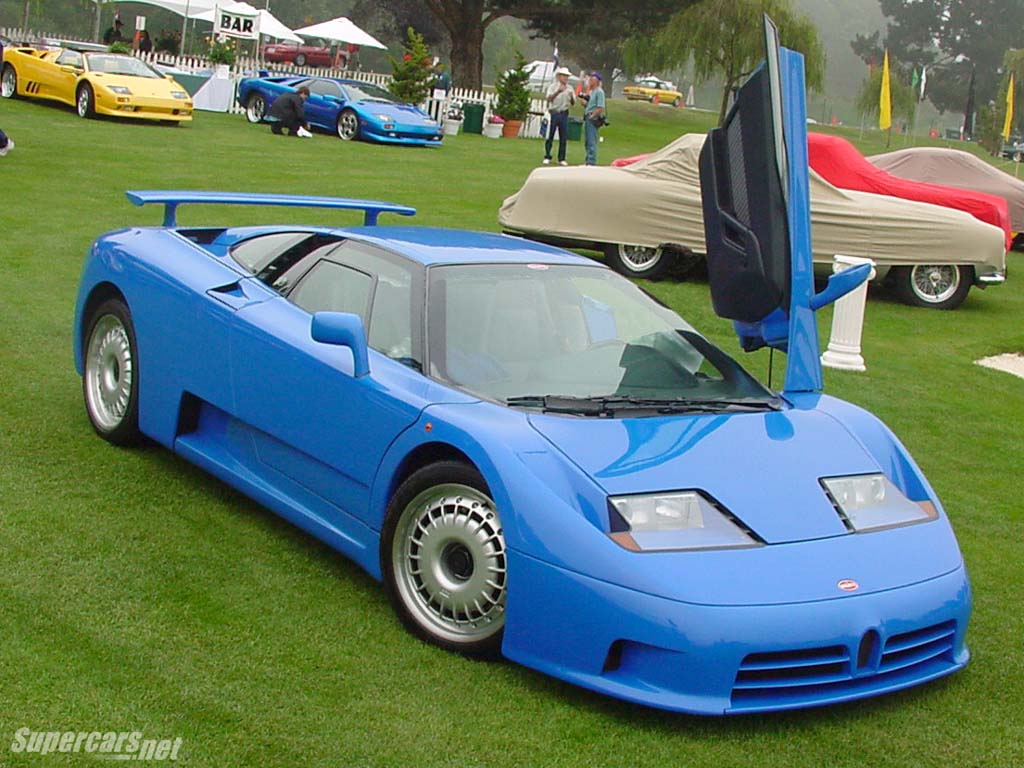-
Insurance
InsuranceAbout our productsLearn about insuringGet a quote Get current values, historical values, model history and more.
-
Valuation
ValuationHagerty valuation toolLook up a vehicle value Get current values, historical values, model history and more.
-
Events
EventsHagerty official eventsHagerty ClubhouseEvent calendar
-
Entertainment
EntertainmentMore to explore
- Portal login
1991 Bugatti EB110
Base Coupe 3.5 L
Vehicle values by condition
Fair
Condition 4
£790,000
#4 cars are daily drivers, with flaws visible to the naked eye. The chrome might have pitting or scratches, the windshield might be chipped.
Good
Condition 3
£1,100,000
#3 cars could possess some, but not all of the issues of a #4 car, but they will be balanced by other factors such as a fresh paint job or a new, correct interior.
Excellent
Condition 2
£1,300,000
#2 cars could win a local or regional show. They can be former #1 cars that have been driven or have aged. Seasoned observers will have to look closely for flaws.
Concours
Condition 1
£2,000,000
#1 vehicles are the best in the world. The visual image is of the best car, unmodified, in the right colours, driving onto the lawn at the finest concours.
Insurance premium for a
1991 Bugatti EB110 Base Coupe 3498
valued at £1,100,000
£9584.70
/ year*
History of the 1991 - 1995 Bugatti EB110

1991 - 1995 Bugatti EB110
Bugatti EB110 (Coupe), 1991-1995
The Bugatti EB110 was in production from 1991 until 1995. Styled by Giampaolo Benedini, it is a mid-engine, rear wheel drive coupe seating two adults.
Development had begun in 1987 on the car which was to become the EB110, with Italian firm Tecnostile – headed by ex Lamborghini engineers who had worked on the Mirua and Countach designs. Marcello Gandini was invited to submit design proposals but these weren’t to the liking of Bugatti boss Romano Artioli. He had Giampaolo Benedini modify the shape into the car it became. Further conflicts led to the departure of the chassis engineers, and the replacement of its original aluminium honeycomb structure with a new carbon fibre chassis. The EB110 is often seen as a symbol of excess. Not only was it expensive, but its 3.5 litre V12 used a total of four turbochargers to reach its peak of 553bhp and 451lb.ft of torque. The subsequent Super Sport variant of 1992 was even more highly tuned, reaching 603bhp and 479lb.ft of torque, and was restyled for greater aerodynamic efficiency alongside a drop in weight. When the EB110 was dropped in 1995 through company bankruptcy, two manufacturers continued its legacy. Dauer Sportwagen of Nuremberg bought the remaining stock of parts, producing four further Bugatti badged examples and using the surplus chassis to create its own improved variant. The EB110’s carbon fibre chassis was also used in the B Engineering Edonis.
Period road testers found that only Jaguar’s XJ220 felt faster, while talking of its impressive tractability at low revs and its relative friendliness to drive. The noise was impressive, the transmission meaty but usable, and even a clutch that wasn’t excessively heavy. Its size and supple suspension made it far more enjoyable on the average British B road than most supercars, though that small size also brought with it the issue of poor accommodation for the taller driver.
In this sort of ball park, most would walk away from anything less than perfection. At the least, you should check that the panel gaps are correctly aligned, and that the car comes with a full service history from reputable specialists. When you’re spending this sort of money, it’s worth looking a little harder and maybe paying a little extra for the peace of mind that that can bring. French Blue is undoubtedly the strongest colour for resale – a good thing, as the majority of cars appear to have been painted in the colour. Those with more money to spend will naturally gravitate toward the more powerful Super Sport model, though that isn’t to say that the standard car is especially cheap. Both are continually rising, making either an excellent case for investment – but Super Sports will always fetch more than the standard equivalent in like for like condition.
Bugatti EB110 customers are very firmly in the supercar league, and little else will do. The chances are that if you want to buy one, you’ll not be swayed by talk of Lamborghinis or Ferraris. The Lamborghini Diablo, the Jaguar XJ220 and even the McLaren F1 are all fine cars well within the wherewithal of the average EB110 buyer, and should nonetheless be considered. Those who wish to live the supercar lifestyle but on a smaller budget might find the Lotus Esprit worth looking at – especially given that during the 1990s both firms were owned by Romano Artioli, giving the EB110 and the 1990s Esprit something of a shared heritage. The Dauer Supersport and B Engineering Edonis are both supercars based heavily upon EB110 architecture, and this might endear them to would be Bugatti owners too.
Hagerty Newsletter
Get your weekly dose of car news from Hagerty UK in your inbox

ADVERTISEMENT